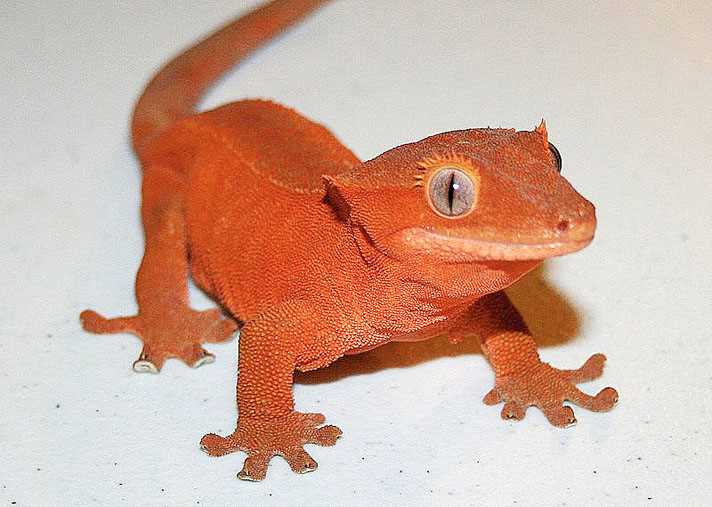The dragons were divided into different age groups to assess growth patterns over time. The dragons were measured for total length, snout-vent length, and tail length. Additionally, their weight and age were recorded to analyze any correlations between growth and these factors. Methods:
To conduct this study, a sample of 100 adult bearded dragons was selected from various sources, including pet stores, breeders, and private owners.
One common question that arises when discussing geckos is whether or not they bite. This report aims to provide an in-depth understanding of gecko bites and their implications. These small reptiles are found in various parts of the world, particularly in tropical and subtropical regions. Introduction:
Geckos are fascinating creatures known for their unique ability to climb walls and ceilings.
Types of Gecko Bites:
While geckos are not typically aggressive towards humans and usually do not bite, there have been instances where they have bitten when they feel threatened or cornered. In such cases, the bite is more of a defensive mechanism rather than an intentional attack. Gecko bites are relatively rare, and the severity of the bite depends on various factors, including the size and species of the gecko, as well as the individual's reaction to the bite.
Physical Characteristics:
Pennsylvania garter snakes are medium-sized snakes, typically measuring between 18-26 inches in length. The back stripe is usually yellow or green, while the two lateral stripes are typically black or brown. This coloration provides effective camouflage in their natural habitats. They have a distinct color pattern consisting of three longitudinal stripes running from head to tail.
 Wetland degradation and pollution also pose risks to these snakes, as they rely on healthy aquatic ecosystems. Conservation Status:
Wetland degradation and pollution also pose risks to these snakes, as they rely on healthy aquatic ecosystems. Conservation Status:
While Pennsylvania garter snakes are not currently listed as a threatened or endangered species, their populations face several threats. Conservation efforts should focus on preserving and restoring suitable habitats, implementing wildlife corridors, and raising public awareness about the importance of these snakes in the ecosystem. Habitat loss due to urbanization and agriculture is a significant concern. Additionally, road mortality is a significant cause of population decline.
Geckos have a unique set of teeth that are designed to grip and crush their prey rather than tear it apart. These teeth, known as "pleurodont teeth," are not designed for aggressive biting. Gecko Behavior:
Geckos are generally docile creatures and prefer to avoid confrontation. They are primarily insectivores, feeding on small insects and spiders.
 Bearded dragons require a humidity level of around 30-40%, as excessive moisture can lead to skin infections or fungal growth. Regular monitoring of humidity levels and providing proper ventilation in the enclosure can help prevent these issues. Maintaining proper humidity levels is also crucial for foot health.
Bearded dragons require a humidity level of around 30-40%, as excessive moisture can lead to skin infections or fungal growth. Regular monitoring of humidity levels and providing proper ventilation in the enclosure can help prevent these issues. Maintaining proper humidity levels is also crucial for foot health.
Conclusion:
Pennsylvania garter snakes are an integral part of the state's reptile diversity, occupying a range of habitats and displaying fascinating behaviors. Understanding their habitat preferences, behavior, and conservation status is crucial for their long-term survival. By implementing effective conservation strategies, we can ensure the preservation of this species and maintain the ecological balance in Pennsylvania's diverse ecosystems.
 As responsible owners, it is crucial to ensure the overall well-being of our scaly companions, including the health of their feet. This report aims to provide a comprehensive understanding of maintaining healthy bearded dragon feet, emphasizing the importance of proper care and potential foot-related issues. Introduction:
As responsible owners, it is crucial to ensure the overall well-being of our scaly companions, including the health of their feet. This report aims to provide a comprehensive understanding of maintaining healthy bearded dragon feet, emphasizing the importance of proper care and potential foot-related issues. Introduction:
Bearded dragons (Pogona vitticeps) are popular reptilian pets known for their unique appearance and docile nature.
By understanding gecko behavior and taking necessary precautions, coexistence with these fascinating reptiles can be safe and enjoyable. Conclusion:
Geckos are generally harmless creatures that do not pose a significant threat to humans. Proper hygiene and prompt treatment of any bites are crucial to prevent complications. While gecko bites are rare, it is important to exercise caution and respect their space to avoid any potential incidents.
These amphibians can live up to 50 years, making them one of the longest-living amphibians on Earth. The Japanese giant salamander (Andrias japonicus), although not a frog, is worth mentioning due to its remarkable lifespan.
Predators and Diseases: Predation and diseases play a crucial role in frog mortality rates. These factors can drastically reduce the average lifespan of frogs. Furthermore, amphibian diseases, such as chytridiomycosis, have caused significant declines in frog populations worldwide. If you are you looking for more info about vitalfrog.com stop by our own web site. Many frog species fall prey to birds, snakes, fish, and mammals.
Pennsylvania garter snakes are non-venomous and rely on their quick reflexes and agility to capture prey. They are excellent swimmers and climbers, allowing them to explore various microhabitats. Their diet primarily consists of small vertebrates, including frogs, toads, salamanders, small fish, and occasionally rodents. Behavior and Diet:
Garter snakes are primarily diurnal and are most active during the warmer months.
To conduct this study, a sample of 100 adult bearded dragons was selected from various sources, including pet stores, breeders, and private owners.
One common question that arises when discussing geckos is whether or not they bite. This report aims to provide an in-depth understanding of gecko bites and their implications. These small reptiles are found in various parts of the world, particularly in tropical and subtropical regions. Introduction:
Geckos are fascinating creatures known for their unique ability to climb walls and ceilings.
Types of Gecko Bites:
While geckos are not typically aggressive towards humans and usually do not bite, there have been instances where they have bitten when they feel threatened or cornered. In such cases, the bite is more of a defensive mechanism rather than an intentional attack. Gecko bites are relatively rare, and the severity of the bite depends on various factors, including the size and species of the gecko, as well as the individual's reaction to the bite.
Physical Characteristics:
Pennsylvania garter snakes are medium-sized snakes, typically measuring between 18-26 inches in length. The back stripe is usually yellow or green, while the two lateral stripes are typically black or brown. This coloration provides effective camouflage in their natural habitats. They have a distinct color pattern consisting of three longitudinal stripes running from head to tail.
 Wetland degradation and pollution also pose risks to these snakes, as they rely on healthy aquatic ecosystems. Conservation Status:
Wetland degradation and pollution also pose risks to these snakes, as they rely on healthy aquatic ecosystems. Conservation Status:While Pennsylvania garter snakes are not currently listed as a threatened or endangered species, their populations face several threats. Conservation efforts should focus on preserving and restoring suitable habitats, implementing wildlife corridors, and raising public awareness about the importance of these snakes in the ecosystem. Habitat loss due to urbanization and agriculture is a significant concern. Additionally, road mortality is a significant cause of population decline.
Geckos have a unique set of teeth that are designed to grip and crush their prey rather than tear it apart. These teeth, known as "pleurodont teeth," are not designed for aggressive biting. Gecko Behavior:
Geckos are generally docile creatures and prefer to avoid confrontation. They are primarily insectivores, feeding on small insects and spiders.
 Bearded dragons require a humidity level of around 30-40%, as excessive moisture can lead to skin infections or fungal growth. Regular monitoring of humidity levels and providing proper ventilation in the enclosure can help prevent these issues. Maintaining proper humidity levels is also crucial for foot health.
Bearded dragons require a humidity level of around 30-40%, as excessive moisture can lead to skin infections or fungal growth. Regular monitoring of humidity levels and providing proper ventilation in the enclosure can help prevent these issues. Maintaining proper humidity levels is also crucial for foot health.Conclusion:
Pennsylvania garter snakes are an integral part of the state's reptile diversity, occupying a range of habitats and displaying fascinating behaviors. Understanding their habitat preferences, behavior, and conservation status is crucial for their long-term survival. By implementing effective conservation strategies, we can ensure the preservation of this species and maintain the ecological balance in Pennsylvania's diverse ecosystems.
 As responsible owners, it is crucial to ensure the overall well-being of our scaly companions, including the health of their feet. This report aims to provide a comprehensive understanding of maintaining healthy bearded dragon feet, emphasizing the importance of proper care and potential foot-related issues. Introduction:
As responsible owners, it is crucial to ensure the overall well-being of our scaly companions, including the health of their feet. This report aims to provide a comprehensive understanding of maintaining healthy bearded dragon feet, emphasizing the importance of proper care and potential foot-related issues. Introduction:Bearded dragons (Pogona vitticeps) are popular reptilian pets known for their unique appearance and docile nature.
By understanding gecko behavior and taking necessary precautions, coexistence with these fascinating reptiles can be safe and enjoyable. Conclusion:
Geckos are generally harmless creatures that do not pose a significant threat to humans. Proper hygiene and prompt treatment of any bites are crucial to prevent complications. While gecko bites are rare, it is important to exercise caution and respect their space to avoid any potential incidents.
These amphibians can live up to 50 years, making them one of the longest-living amphibians on Earth. The Japanese giant salamander (Andrias japonicus), although not a frog, is worth mentioning due to its remarkable lifespan.
Predators and Diseases: Predation and diseases play a crucial role in frog mortality rates. These factors can drastically reduce the average lifespan of frogs. Furthermore, amphibian diseases, such as chytridiomycosis, have caused significant declines in frog populations worldwide. If you are you looking for more info about vitalfrog.com stop by our own web site. Many frog species fall prey to birds, snakes, fish, and mammals.
Pennsylvania garter snakes are non-venomous and rely on their quick reflexes and agility to capture prey. They are excellent swimmers and climbers, allowing them to explore various microhabitats. Their diet primarily consists of small vertebrates, including frogs, toads, salamanders, small fish, and occasionally rodents. Behavior and Diet:
Garter snakes are primarily diurnal and are most active during the warmer months.





 Four Tips On Vitalfrog.com You Can Use Today
Four Tips On Vitalfrog.com You Can Use Today